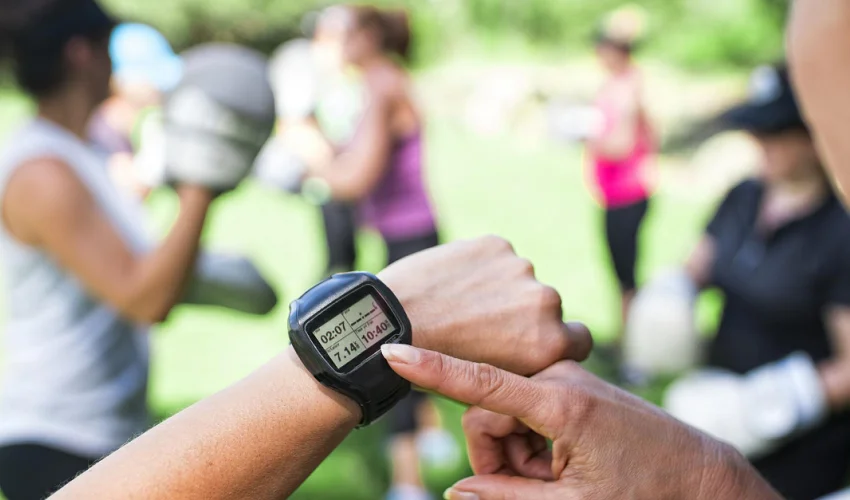Living with Type 1 Diabetes (T1D) can be a challenging journey, requiring careful management of blood glucose levels and overall health. While medical advancements have significantly improved the quality of life for individuals with T1D, incorporating regular physical activity into their daily routine can offer additional benefits. One such activity that holds great potential is achieving daily step counts. In this article, we will explore the importance of meeting daily step counts for adults with T1D, examining the numerous advantages it brings to their overall well-being, glucose management, and long-term health.
Understanding T1D and Its Challenges
Type 1 Diabetes is an autoimmune disease characterized by the destruction of insulin-producing cells in the pancreas. Managing T1D involves continuous monitoring of blood glucose levels, administering insulin, and making lifestyle adjustments to maintain stable glucose control.
Regular physical activity has a positive impact on blood glucose management for individuals with T1D. It improves insulin sensitivity, reduces insulin resistance, and promotes better overall glycemic control. Regular physical activity offers numerous benefits to adults with T1D, including improved cardiovascular health, enhanced insulin utilization, weight management, increased energy levels, and improved mental well-being.
Daily Step Counts and Glucose Management
Regular physical activity, including achieving daily step counts, plays a crucial role in maintaining stable blood glucose levels throughout the day. It promotes glucose uptake by muscles, reducing the reliance on exogenous insulin and enhancing overall glycemic control.
Meeting daily step counts has a positive impact on blood glucose levels for individuals with T1D. Studies have shown that physical activity, such as walking, can lead to immediate reductions in blood glucose levels. It can also help prevent post-meal spikes and contribute to more stable blood glucose patterns.
Enhancing Insulin Sensitivity through Walking
Walking, a simple and accessible form of physical activity, can improve insulin sensitivity. Regular walking increases the body’s ability to utilize insulin, making it more effective in regulating blood glucose levels. This enhanced sensitivity reduces the risk of hypoglycemic episodes and improves overall glucose control.
Managing Post-Meal Spikes with Physical Activity
Engaging in physical activity, such as walking after meals, can help manage post-meal spikes in blood glucose levels. Walking promotes the uptake of glucose by muscles, preventing excessive increases in blood glucose and aiding in maintaining stable levels throughout the day.
Long-Term Health Benefits of Meeting Daily Step Counts
Meeting daily step counts contributes to weight management and cardiovascular health. Regular physical activity, including walking, helps burn calories, maintain a healthy weight, and reduce the risk of cardiovascular diseases, such as heart disease and stroke.
Improved Insulin Utilization and Reduced Insulin Resistance
Regular physical activity improves insulin utilization and reduces insulin resistance. By enhancing the body’s response to insulin, individuals with T1D can achieve better blood glucose control, reduce the required insulin dosage, and minimize the risk of complications associated with insulin resistance.
Enhancing Mental Health and Well-being
Physical activity, including achieving daily step counts, has a positive impact on mental health and overall well-being. Exercise releases endorphins, which improve mood and reduce stress levels. It can also alleviate symptoms of anxiety and depression often experienced by individuals with T1D.
Reduction of Long-Term Complications
Regular physical activity can help reduce the risk of long-term complications associated with T1D, such as cardiovascular diseases, neuropathy, and nephropathy. By improving overall glucose control and enhancing cardiovascular health, individuals with T1D can minimize the impact of these complications on their quality of life.
Practical Strategies for Meeting Daily Step Counts
Setting realistic goals is essential when incorporating physical activity into daily routines. Gradually increasing step counts and aiming for achievable targets can provide a sense of accomplishment and motivation to continue the habit.
Incorporating Physical Activity into Daily Routine
Finding opportunities to be physically active throughout the day is key to meeting daily step counts. This can include taking the stairs instead of the elevator, parking farther away from destinations, or incorporating short walks into breaks at work or during leisure time.
Overcoming Barriers and Challenges
Individuals with T1D may face unique challenges when engaging in physical activity, such as managing blood glucose levels during exercise and preventing hypoglycemic episodes. Consulting with healthcare professionals, monitoring blood glucose levels, and adjusting insulin doses accordingly are essential for safe and effective physical activity.
Utilizing Technology and Wearable Devices
Technological advancements, such as wearable devices and smartphone applications, offer valuable tools for monitoring physical activity and tracking step counts. These devices provide real-time data, allowing individuals to set goals, track progress, and stay motivated on their journey towards meeting daily step counts.
Safety Considerations and Precautions
Before initiating or intensifying an exercise routine, individuals with T1D should consult with healthcare professionals. Healthcare providers can offer personalized guidance, address any concerns, and provide recommendations tailored to an individual’s specific health needs.
Monitoring Blood Glucose Levels during Exercise
Regular monitoring of blood glucose levels during exercise is crucial for maintaining safety and preventing hypoglycemia or hyperglycemia. Checking blood glucose levels before, during, and after physical activity helps individuals make necessary adjustments to insulin doses or carbohydrate intake.
Hydration and Proper Nutrition
Staying adequately hydrated and consuming a balanced diet are essential for individuals with T1D engaging in physical activity. Hydration supports optimal bodily functions, while a balanced diet ensures sufficient energy and nutrients to support exercise and recovery.
Recognizing Signs of Hypoglycemia and Hyperglycemia
Understanding the signs and symptoms of hypoglycemia (low blood sugar) and hyperglycemia (high blood sugar) is vital for individuals with T1D. Recognizing and responding to these conditions promptly during physical activity can help maintain safety and prevent complications.
Incorporating regular physical activity, specifically meeting daily step counts, can significantly enhance the quality of life for adults living with T1D. From improved blood glucose management to long-term health benefits, the advantages of physical activity cannot be overstated. By setting realistic goals, overcoming challenges, and ensuring safety, individuals with T1D can integrate exercise into their daily routine. Remember to consult with healthcare professionals, monitor blood glucose levels, and prioritize hydration and nutrition. Let us take steps towards better control and embrace the numerous benefits that achieving daily step counts can bring to our lives with T1D.




